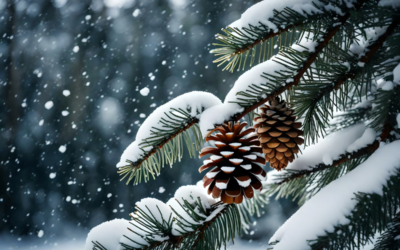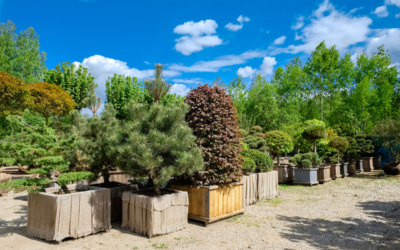Fall is a great time to plant trees. Roots grow best in cooler soil and shorter days let trees focus more energy on building a strong root network instead of growing leaves and branches.
Plus, bargains abound as nurseries begin clearing out their stock before winter hits.
Building a Strong Foundation
Trees grow in two different directions—up and down. As they develop, they send out a network of roots that is essential to their health. Those roots gather moisture and nutrients from the soil and anchor the plant firmly in the ground.
Planting a tree in the fall while the soil is still workable gives the roots time to spread and nourish the plant all winter long. This can be of special benefit to young trees. When the cool air signals the tree to stop making leaves and new upper growth, energy can be directed below ground giving the tree a solid foundation for growth come springtime.
Do All Trees Benefit from Fall Planting?
Deciduous trees lose their leaves in fall so their need for water is reduced considerably in the winter. That lets them focus on root development in the winter. But evergreen leaves and needles lose water all winter long, especially broad-leafed varieties, and deep frost lines can stress their root systems. So even though we think of evergreens as cold weather trees, spring planting will give their roots a better opportunity to grow deep enough to reach the moisture they need to prevent spring browning and die-off.
It’s also why it’s important to keep your trees and shrubs watered throughout the winter.
When to Avoid Planting
There’s nothing wrong with planting deciduous trees in the spring. Properly planted and maintained spring trees will usually have time to develop a root structure that will serve them adequately during the winter. But a better-developed root system with less top growth gives them a stronger start on new spring and summer growth.
Intense midsummer heat and drought put undue stress on trees, though, especially tender young ones. Deeply frozen soil deprives roots of moisture and is difficult to work for proper planting. So avoid extremes of both hot and cold to give your trees and shrubs the strong start they need. If you must plant in mid-summer or mid-winter, ask your nursery staff or a professional arborist the best practices for the type of tree you are planting.
One More Reason to Plant in the Fall
Just as nurseries are chock-full of trees in the spring, in fall their inventory has dwindled and prices drop. But good nurseries keep at least some good-quality stock year-round, so late summer and fall are great times to seek out bargains.
If you need help choosing the right trees and planting times for your landscape, Donovan Arborists offers planting, pruning, and shearing services as well as a complete landscape maintenance package for property in the Denver area.
We’re always happy to give free estimates to homeowners and property managers for any services they may need.




